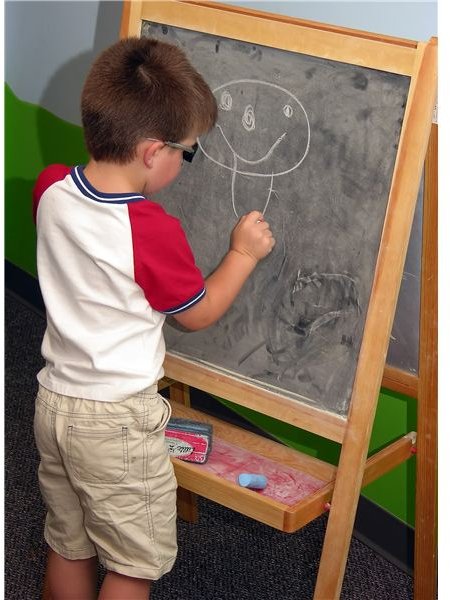Preschool Kinesthetic Learners: Teaching Techniques for Your Movers and Shakers
Kinesthetic learners are often classified as children who learn best in a hands-on environment. When discussing preschoolers, the majority of children are kinesthetic learners. According to Piaget’s theories, many preschoolers are still within the sensorimotor phase of development. This means that children learn by using their senses and motor skills. Lectures and watching others perform tasks are not effective teaching techniques for these students.
Preschool kinesthetic learners may wiggle, tap their feet and seem unable to sit still. Because of this, they may earn the label of hyperactive or inattentive. However, this is not always the case. These students have a strong sense of motion and body awareness, making them exceptional athletes, dancers and actors.
Teaching Kinesthetic Learners Across The Curriculum
Since many preschoolers can be described as kinesthetic learners, it is essential to provide ample opportunities for children to move their bodies and engage in sensory and motor activities. Incorporating movement and sensory experiences into almost every activity may seem like a daunting task, but once you begin you’ll find it adds a lot of fun and excitement to your curriculum!
Circle Time: For kinesthetic preschoolers, a long, quiet circle time can feel like torture! Give children an opportunity to move their bodies by including a movement activity into each circle time. Even a clapping, snapping or toe tapping activity can help students participate in circle time. When moving is not a possibility, give children a small object to put in their hands. Buttons, a portion of clay, a pipe cleaner or a stress ball can help children focus on the circle time activity.
Language and Literacy: Incorporate sensory elements into language activities. For example, combine a sensory activity with letter learning by providing trays of cornmeal for children to practice writing their letters using their fingers. Cut letters out of sandpaper and place them in your literacy center. Allow children to explore these tactile letters in whatever way they choose.
Art: Provide many different materials for kinesthetic learners to explore each day. Also, do not require children to sit down while creating art. Use easels rather than low tables for children to paint or draw. If you do not have an easel, attach paper directly to the wall. Use clay instead of play dough for sculpting activities, as it requires a bit more effort to mold.
Science: Add as many sensory activities to your science curriculum as possible. Create feely guessing boxes using old shoe boxes and different classroom materials. Cut a hole in the top of the shoe box large enough for a child to fit his hand inside. Place several objects inside of the box, such as feathers, buttons and textured fabrics. Play a guessing game by allowing the children to reach their hand into the box and guess what object they can feel inside. Keep kinesthetic learners moving with sink and float games, exercise games and outdoor nature hunts.
In order to effectively teach preschool kinesthetic learners, it is imperative for teachers to think like them. Incorporate as many sensory and movement activities as possible into the preschool day in order to cater to the needs of your active students.
References
- “Creative Activities for Young Children”; Mary Mayesky; 1995
- Photo Credit: phaewilk http://morguefile.com/archive/display/131959
- “Understanding Children”; Judith A. Shickendanz; 1995
